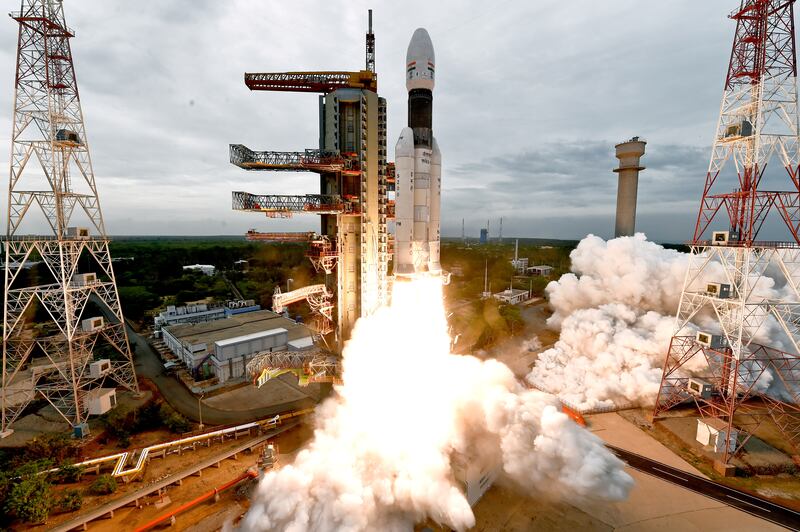After losing much of the past two years to Covid-19, India's manned spaceflight programme, Gaganyaan, was expected to kick up to high gear in the new year in order to meet its ambitious goals. The January 4 announcement by the chairman of the Indian Space Research Organisation (ISRO), that the government had ordered an unmanned test launch of the system by India's 75th Independence Day on August 15, confirmed as much.
Ever since Prime Minister Narendra Modi announced in August 2018 the government’s intention to put an Indian crew into orbit with funding to boot, there's been little doubt that India would succeed, just as China did almost two decades ago, in 2003.
The commitment to establish India as only the fourth nation in history with independent human spaceflight capability is widely popular in the country; it is seen as entirely fitting for India's level of economic development and its place in the world order. India's own proven space capabilities, and its arrangements for knowledge transfer from Russia's mature astronautics programme make it more or less a given, subject to delays from inevitable technical gremlins and acts of God such as the pandemic.
The larger, more important questions are about what comes after a triumphant splashdown in the Indian Ocean. Is manned spaceflight aimed at enhancing national pride, or about meeting strategic and economic goals? Will India try to go it alone as an independent space power, or join up with the West? Is space going to be a largely government-led affair, or commercial and private?
Answering these questions would indicate the extent of India's space ambitions and how it plans to realise them. The short answer is that the government has not yet decided. In fact, it has not yet approved the policy framework to develop and weigh its options; the draft has been in circulation since last February. But despite this, India's choices in other high-tech areas, ranging from IT to nuclear energy and aviation, suggest the general direction that things are heading in.
The truth is the ability to safely launch and return human beings from space on one's own is mind-bogglingly expensive and risky. Unlike the ability to build and launch Earth-orbiting satellites and interplanetary robotic probes, it is unclear if there yet is any compelling scientific, economic or military reason to do so. Human spaceflight is, for now, first and foremost a powerful statement of national ambition regarding a country's place in the global power structure.
For this very reason, the founder of India's civil space programme, Dr Vikram Sarabhai, instilled a unique vision that held for half a century. India’s space mission was not a search for national glory, or even science for its own sake. Instead it was a highly frugal but innovative drive for practical applications, such as the remote sensing and telecommunications that have enabled rural India to "leapfrog" over its monumental developmental challenges. This, like many other things in India, is changing, thanks in no small part to its neighbour.

China’s official policy, in contrast, is to establish itself as the world’s leading space power by 2050, and it appears determined to achieve this goal despite formidable challenges. The EU and Japan in contrast, despite possessing their own astronaut corps and proven heavy space launch capabilities, believe that they cannot justify the cost of manned spacecraft. Instead, they prefer to partner with Nasa and pay for rides on American and Russian spacecraft. In many ways, this reflects the larger security architecture of European and Japanese dependence on American guarantees.
India, preferring foreign policy autonomy, established its own nuclear deterrent, and has largely fought its wars on its own. This independent capability was the basis for its close strategic co-operation with more powerful states – the Soviet Union in the 1970s and 80s, and the US since 9/11 in ventures like the China-focused geopolitical grouping known as the "Quad". In both cases, technological co-operation went hand in hand with security ties.
It is clear that, as things stand, India on its own cannot indefinitely sustain a manned space programme on the scale of Americans or the Chinese. But the paradox is that negotiating the kind of participation in manned international space exploration alongside the US that will satisfy India's increasingly nationalistic audience requires the country to develop capabilities of its own that exceed the Europeans, Japanese and Canadians.
To put it another way, India, unlike America and China, seeks full membership in the world’s most elite clubs, but not leadership. This means the ability to launch and recover crews, and the ability to build and launch space station modules. It will mean building infrastructure for long-term space medicine and psychology, materials science, robotics, etc. India’s great advantage is the relatively low cost of its scientific manpower and, increasingly, the quality of its own burgeoning aerospace industry. This is critical because the larger problem the ISRO, like government space programmes all over the world, must face is whether it can possibly compete with the increasingly explosive pace of innovation from the so-called ‘New Space’, i.e. highly disruptive private companies like Elon Musk’s SpaceX, or New Zealand’s Rocket Lab. Instead, governments seem much better suited to act as regulators, seed investors and scientific resources for the sector. That is indeed the role they have already established for themselves in the civil aviation and cyber sectors.
Fortunately, it seems that New Delhi very much recognises this. In October, the Indian Space Association was launched as an industry body, and Mr Modi signalled his support by personally becoming a member. The ISRO has also moved to subcontract the manufacture of space systems to Indian companies, and to license technology for spinoffs.
More importantly, as with aviation and nuclear energy, agreements between India and the West are opening the road for Indian companies to participate in the global space economy. International media reporting and the growing worldwide respect for the ISRO’s achievements serve as a powerful advertisement for Indian companies in this regard.
In the medium to long run, Information Technology may be the right analogy to understand India’s place in outer space. While China and America have become increasingly walled off from each other in cyberspace, the Indian IT industry’s relationship with Silicon Valley stands in sharp contrast. Although it isn’t a leader in hardware or software innovation, it is deeply integrated as a source of world-class talent and contractors with world beating cost effectiveness. The win-win benefits of this structural relationship have not made Indians any less proud or prosperous, and it is a model that could work just as well in the "New Space" race.





